[ad_1]
African designers are making a splash, from fashion weeks in Dakar and Lagos, to Paris runway shows by South African Thebe Magugu. Here in the US, the designers Busayo, Telfar, and Hanifa infuse their collections with aesthetics from their home countries of Nigeria, Liberia, and Congo.
While many Western consumers are now embracing African designers, a new exhibit at the Victoria and Albert Museum in London makes the case that Africa has always had an influence on global fashion. The ambitious show, entitled “Africa Fashion,” captures the multiplicity of fashion across the 54 countries of Africa, tracing its roots from the ancient past to the postcolonial period.
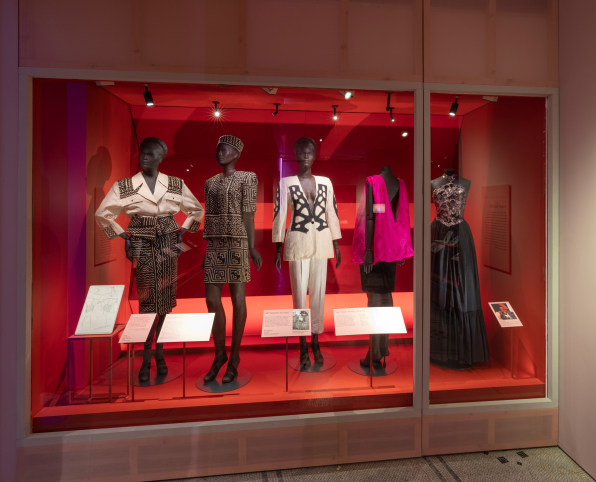
But perhaps most interestingly, it shows how African designers are influencing the global fashion industry with everything from their sustainable practices to aesthetic sensibilities. “We hope the exhibition will give a glimpse of this abundant scene, recognizing that African fashion creatives are shifting the geography of global fashion,” says the project curator Elisabeth Murray.
Christine Checinska, the museum’s first curator of African and African diaspora fashion, explains the long history of African fashion in a comprehensive book that accompanies the show. She points out that African people have always traveled across Europe and Asia, bringing their fabrics, prints, and silhouettes with them, which then go on to influence local fashions across the world.
And yet, because of racism around the world, African fashion has often been misrepresented, being stereotyped as primitive, and portrayed as unchanging. Or else, it’s “an exoticized source of inspiration for designers of the Global North,” Checinska writes. (Consider how designers like Tory Burch and Stella McCartney have been accused of cultural appropriation.)
This exhibit sheds light on the history, complexity, and nuance of African fashion, offering a better appreciation for the work from a number of talented designers from across the continent as well as in the diaspora. Here are four important aspects of African fashion history that help us contextualize the work of African designers today.

There’s Long Been a Robust Fashion Ecosystem
Shade Thomas-Fahm is not a household name, but she ought to be. Born in 1933, she is sometimes described as Nigeria’s first fashion designer. At the age of 20, she landed in Britain to train to become a nurse, but when she saw the fabulously dressed mannequins in London stores, she started taking courses at Saint Martin’s School of Art.
When she returned to Nigeria in 1960, the country had just gained its independence from Britain. In this crucial moment, she became one of the first modern African designers, setting up a store called Maison Shade and a factory in the Yaba Industrial Estates to manufacture her garments. She’s known for reimagining traditional Nigerian fabrics, patterns, and colors, and deliberately elevating her creations to fit in with Western notions of “couture.”
In the book, Checinska wrote that Thomas-Fahm also contributed to “the development of a fashion ecosystem that was directly informed by what she experienced overseas,” setting the stage for the hundreds of designers now emerging throughout the continent. Today, African designers often tap into local craftsmanship and workshops to create their garments, and participate in fashion weeks modeled after European versions.
Five Key Fabrics Drive the Designs
Bold prints are key to African fashion. They’re skillfully deployed, modernized, and remixed by contemporary African designers. Western brands and designers sometimes use them as well, and have been accused of cultural appropriation. The exhibit pulls out five distinct textiles that have become foundational to contemporary African designers.
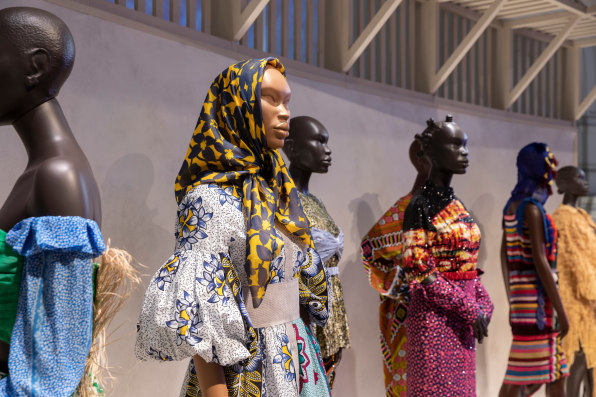
Wax Print
This fabric originated in Java, an island in Indonesia, but in 1846, Dutch traders tried to mass produce it in the Netherlands in order to sell it back to the Javanese. However, the Javanese did not like the machine-made cloth, which had little cracks and spots on it. So the Dutch marketed the cloth in West Africa, where the locals appreciated the “marks of imperfection.” This fabric has become popular across Africa and is central to the modern African aesthetic. Indeed, it is now made locally in factories across the continent, with machines incorporating the spots into the final designs.
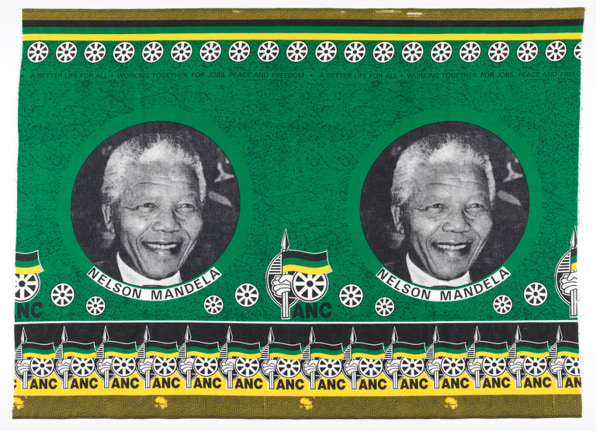
Commemorative Cloth
Throughout Africa, cotton fabric is printed in factories to commemorate important milestones, including the election of politicians. When Nelson Mandela was elected South Africa’s first Black president, and Barack Obama later became America’s first Black president, they each had their faces silkscreened on a special commemorative cloth. These fabrics tend to be displayed as decorative items, rather than worn.
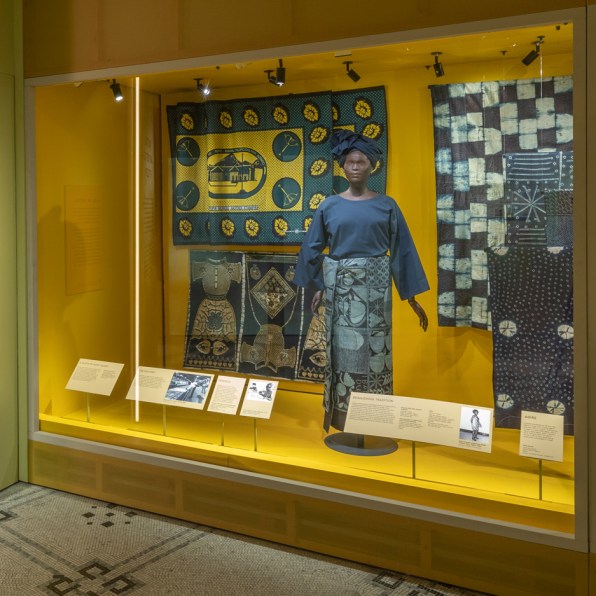
Àdîrê
This is a specific fabric that comes from the Yorùbá people of southwest Nigeria and goes back to the 1800s. It’s made by tying fabric in knots and dying it, which creates elaborate, colorful patterns. It’s worn by women as wrappers around their bodies, and incorporated into men’s sleepwear. Over the years, the popularity of Àdìrê has risen and fallen. In the first half of the 20th century, it was sometimes seen as backward by the educated middle classes, but the fabric has come back into fashion among many young Nigerian designers, including Busayo, whom I profiled last year.
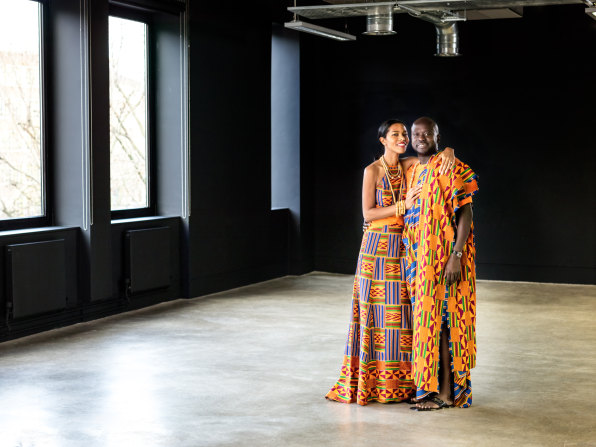
Kente
This cloth is associated with the Asante people of south central Ghana. It’s made by handlooms that bring together narrow strips of cloth to create a swath of fabric large enough to wrap around a person’s body. The cloths contain complex geometric patterns that sometimes tell stories, representing birds, people, and insects.
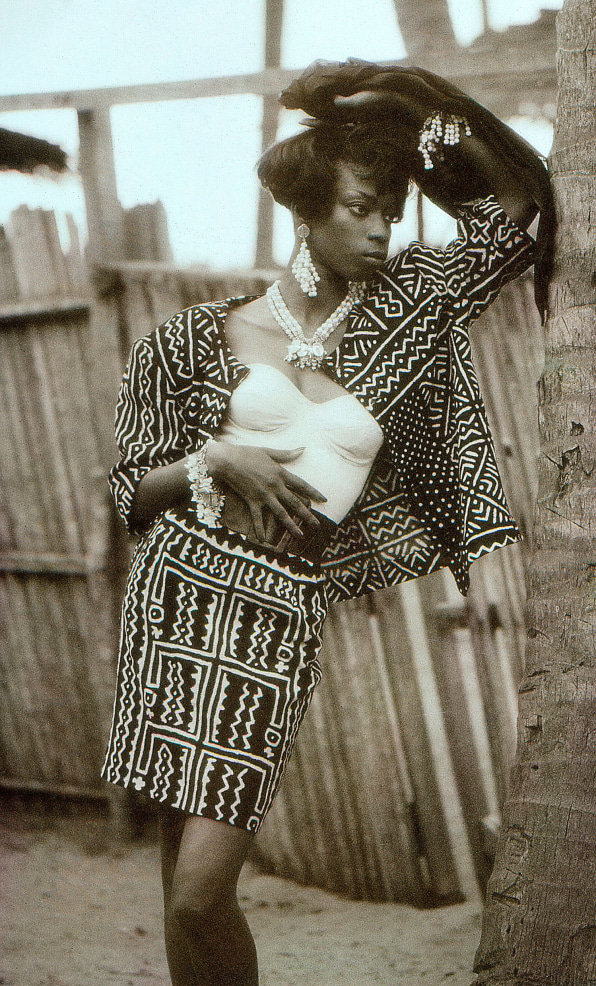
Bògòlanfini
This fabric is made by the people of Mali and Burkina Faso, and is particularly associated with the towns and villages of Beledougo. It consists of hundreds of strips that are woven and dyed together to create garments. Experts aren’t sure when it was first developed, but evidence goes back to the 11th century, when the fabric was used to make tunics for hunters and warriors, and wrappers for teen girls and women. These garments are worn during important moments in a person’s life, including marriage, childbirth, and burial.
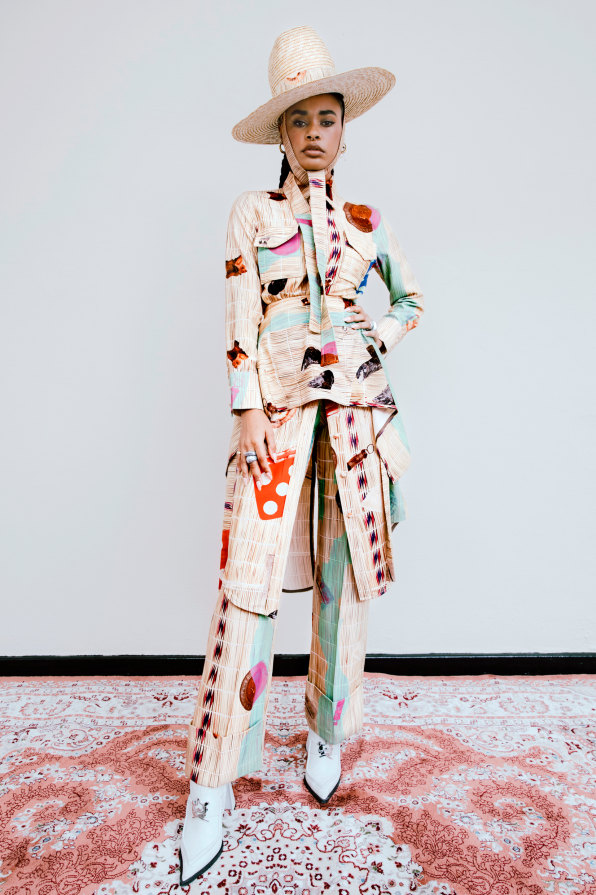
Gender Fluid Fashion Is En Vogue
As I’ve written before, many countries in Africa tend to have conservative views on gender and sexuality. But there are also a number of designers using fashion to push back against these perspectives. Nigerian designer Adebayo Oke-Lawal, for instance, launched the brand Orange Culture a decade ago in an effort to create space for people like him, who don’t want to be restricted by traditional culture.
While blue is often considered a “masculine” color in the West, Oke-Lawal finds himself drawn to orange, which sits across the color wheel from blue. Orange Culture’s garments are gender-bending and androgynous. The menswear features tailored pink suits and see-through gowns; the womenswear includes oversize, boxy blazers. It’s all designed to reveal how arbitrary and socially constructed our notions of gender and sexuality are.
Here in the US, Telfar Clemens, who is originally from Liberia, does similar work. He seeks to push back against traditional gender norms, creating unisex clothes. His latest Telfar collection features asymmetrical one-shoulder tops in pink and orange, which are worn by both male and female models. And his iconic handbags are carried by people of both genders.
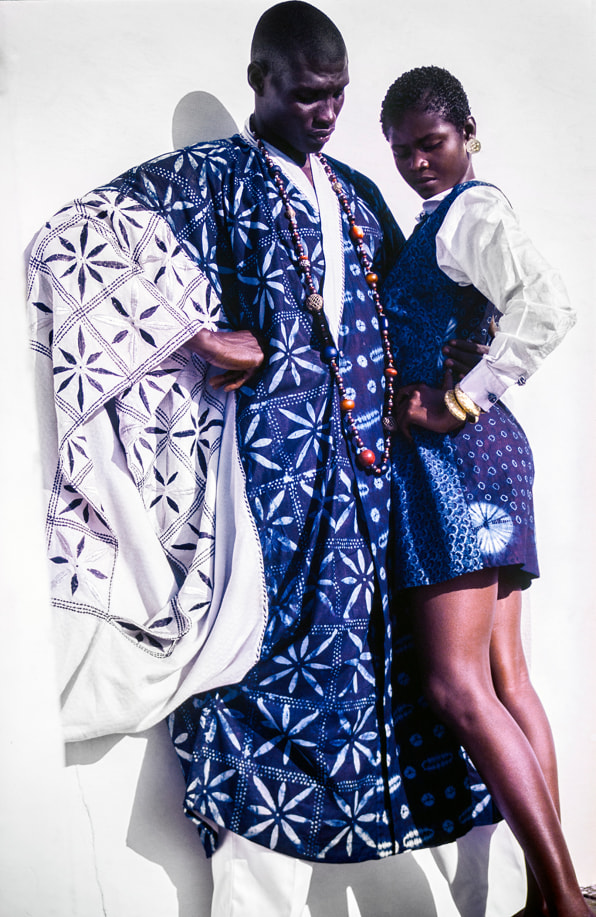
Sustainability Is Paramount
For decades, Africa has been the dumping ground for fashion waste from Europe and the US. When Western consumers donate clothes to charities like Goodwill, more than 80% of it is unsellable and shipped off to countries across Africa to be resold. But ultimately, much of it ends up in landfills in those countries.
Africans have long seen the extent of the world’s fashion waste, and this is informing how a new crop of designers operates. Take Kofi Ansah, a Ghanaian designer who was born in 1951 and died in 2014. A decade ago, he created collections for Saks Fifth Avenue and retailers in Milan, but he was also focused on manufacturing in a way that didn’t create waste.
He founded a weaving center, encouraging young people to create textiles locally in small factories that make products on demand rather than relying on the global fashion supply chain, which generates a lot of waste. Many of today’s young designers follow in his footsteps. Busayo, for instance, has opened a small factory in Nigeria, creating garments in small batches, to ensure there’s no overproduction.
[ad_2]
Source link

